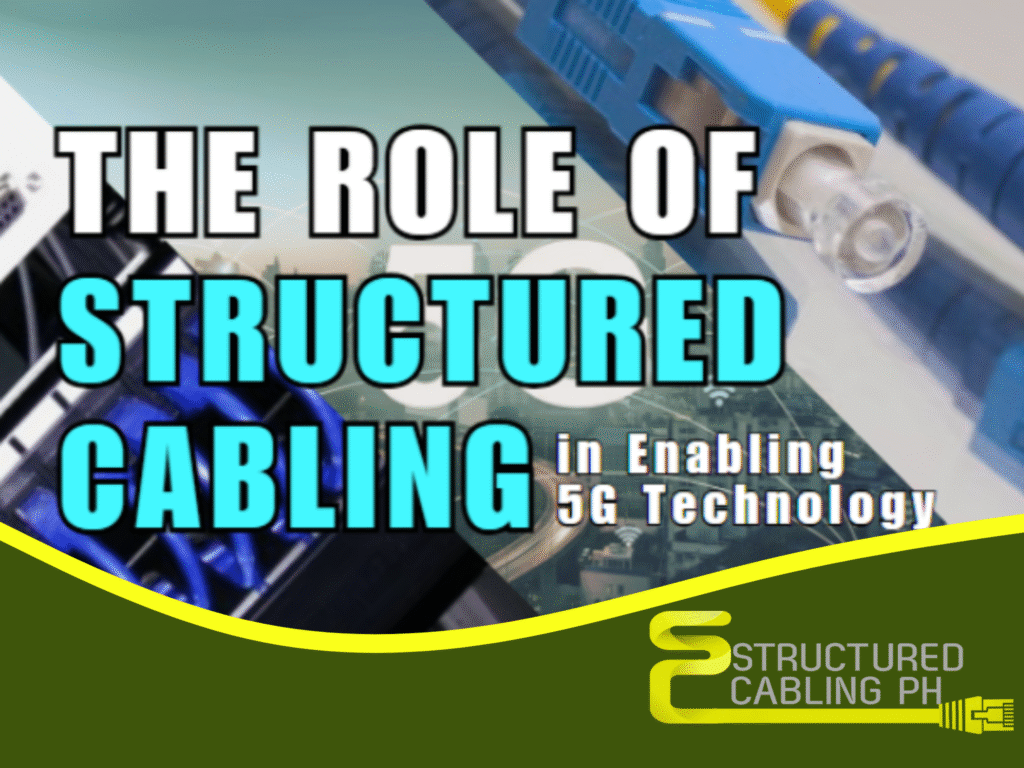The arrival of
5G technology marks a new era in connectivity, promising lightning-fast speeds, ultra-low latency, and the ability to support billions of connected devices. But while 5G often brings to mind wireless networks and mobile data, what many people overlook is the
critical role of structured cabling in making this technology work behind the scenes.
Structured cabling provides the foundation that supports the
massive data demands and infrastructure backbone of 5G networks. In this article, we’ll explore how structured cabling enables 5G connectivity and why it’s a vital component for building future-ready networks.
What is Structured Cabling?
Structured cabling refers to the
standardized system of cables and hardware used to provide comprehensive telecommunications infrastructure. This includes:
- Copper cabling (Cat6, Cat6a, Cat7)
- Fiber optic cabling
- Patch panels
- Racks and trays
- Connectors and outlets
It’s designed to support multiple hardware uses and be scalable and adaptable as technology evolves, like the shift from 4G to 5G.
How Structured Cabling Supports 5G Deployment
1. Supports High Data Rates and Low Latency
5G networks are expected to deliver speeds of up to
10 Gbps with
latency as low as 1 millisecond. To handle these high data rates, the backhaul and fronthaul infrastructure that connects antennas, data centers, and network cores must be capable of
fast and reliable data transmission.
- Fiber optic cabling is especially critical here, as it provides the bandwidth and speed needed for 5G base stations and data hubs.
- High-performance copper cabling, such as Cat6a or higher, is also used in edge devices and for PoE (Power over Ethernet) applications.
2. Connects Small Cells and Distributed Antennas
Unlike 4G, 5G relies on
dense networks of small cells to
deliver consistent coverage and speed. These small cells are often mounted on buildings, poles, and street furniture—and each one needs to be connected to the network core through a high-speed wired link.
Structured cabling ensures that:
- Fiber runs reach these nodes efficiently and cleanly
- Network performance is maintained even in high-density environments
- Signal integrity is not compromised due to electromagnetic interference (EMI)
3. Enables Edge Computing Infrastructure
To reduce latency and enhance real-time processing, 5G requires
edge computing—where data is processed closer to the user instead of a centralized cloud. These edge devices need structured cabling for:
- Reliable high-speed data transmission
- Interconnecting servers, storage, and processing units
- Maintaining organized and manageable cabling systems in distributed locations
4. Simplifies Network Expansion and Maintenance
5G is designed to scale. As more users and devices come online, networks need to expand rapidly. Structured cabling provides:
- A modular, organized cabling layout that makes future upgrades easier
- Reduced downtime and simplified troubleshooting
- Clear documentation and pathways that technicians can follow
This flexibility is key to keeping up with 5G’s evolving demands.
5. Integrates Smart Cities and IoT
Structured cabling is not just for telecom networks. It also supports
smart city infrastructure like:
- Surveillance systems
- Smart traffic management
- Public Wi-Fi
- IoT devices for environmental monitoring
All of these rely on high-speed, stable connectivity, something structured cabling enables behind the scenes.
Fiber vs. Copper in the 5G Era
| Feature |
Fiber Optic |
Copper Cabling |
| Speed |
Extremely high |
Moderate to high |
| Distance |
Long-range (up to kilometers) |
Limited to ~100 meters |
| EMI Resistance |
Immune |
Susceptible |
| 5G Backhaul |
Best option |
Not ideal |
| Edge/Indoor Connections |
Common |
Common |
Both types of cabling play important roles in 5G infrastructure, depending on the use case and environment.
Final Thoughts
5G may be wireless on the surface, but its power and performance depend on a
robust, well-designed structured cabling system underneath. Whether it’s fiber running to cell towers or copper cabling powering edge devices, structured cabling is the silent partner that helps 5G thrive.
For businesses, developers, and governments preparing for 5G integration, investing in future-ready structured cabling is no longer optional—it’s essential.
Need expert guidance on 5G-ready structured cabling design and installation?
VastResultprovides professional consulting, structured cabling setup, and scalable network infrastructure tailored to modern connectivity demands. Contact us today at
(02) 8404 0740 or email us a
tsupport@vastresult.com. And together, let’s build the foundation for your 5G future.


